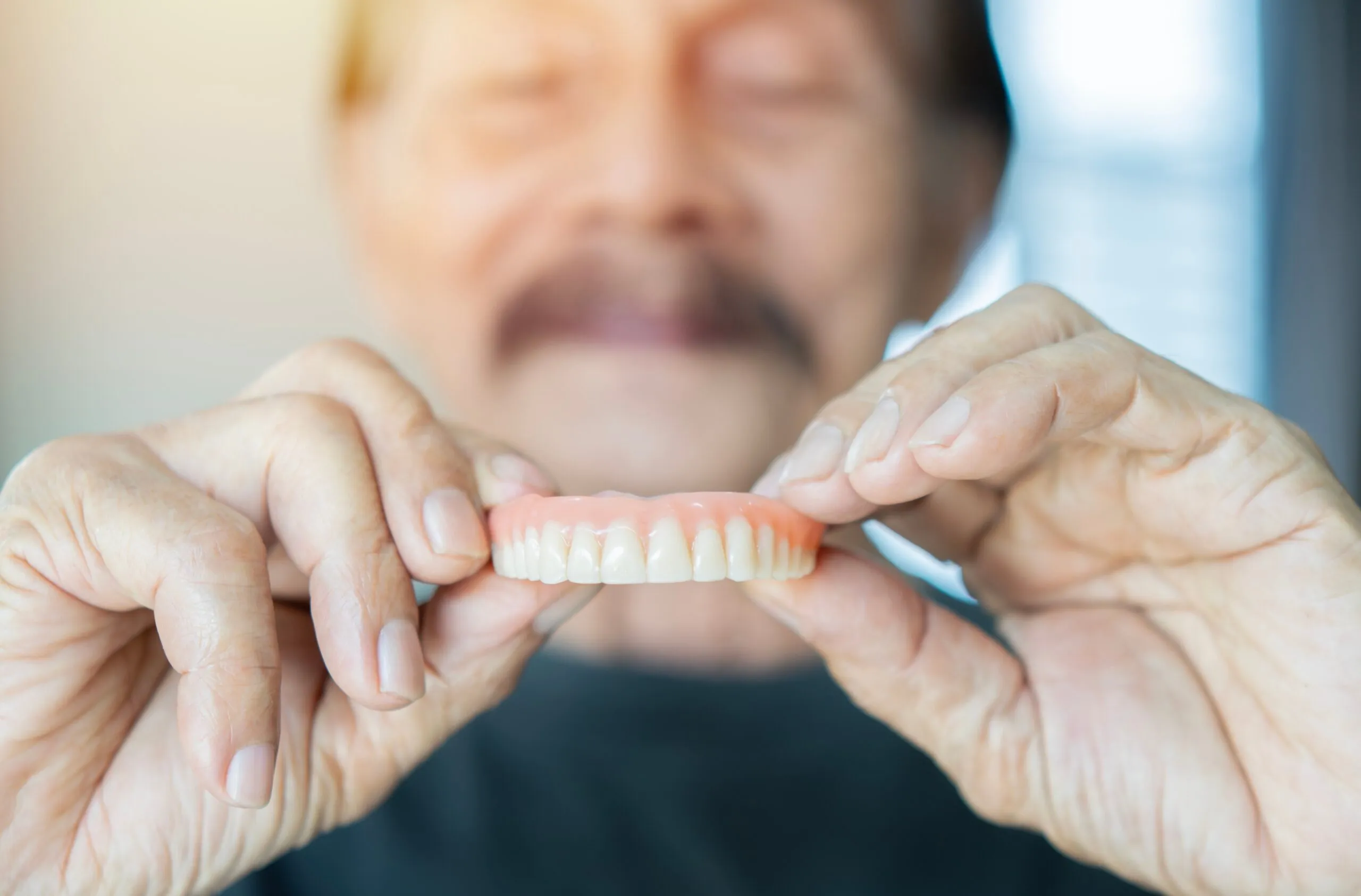More than 36 million Americans don’t have any teeth. And 120 million are missing at least one tooth. (American College of Prosthodontists) 90% of men and women without teeth wear dentures. Are you one of them?
DENTURES AREN’T THE IDEAL TOOTH REPLACEMENT
If so, how are your dentures working for you? Do they slip around in your mouth? Are they uncomfortable? If so, it may be time for a reline. Dentures need to be relined periodically so they fit right. The reason for this is because of bone loss and gum shrinkage. Think about that for a minute. Bone loss?!! Gum shrinkage?!!
Let’s discuss it.
WHAT CAUSES BONE LOSS?
To remain healthy and dense, your jaw bone needs to be continuously stimulated by the pressure of chewing, biting, and talking. Each tooth has a root structure that extends into the surrounding bone material. As each tooth absorbs the forces of everyday mouth function, it stimulates blood flow in the bone surrounding the root.
In other words, your jaw bone has an important job to do, but can diminish if it’s no longer needed.
Think about this for a minute. When tooth roots are gone, your jaw bone starts shrinking. And what happens when the underlying structure shrinks? The outer structure changes as well. Eventually, the shape of your face will change.
BONE LOSS ISN’T INEVITABLE
Before you resign yourself to a diminishing jaw bone and eventual hollowed-out cheeks, consider a better option. We’re talking about implant secured dentures.
WHAT ARE IMPLANT-SECURED DENTURES?
A dental implant is a replacement for a tooth that includes the tooth root and the visible part of the tooth. A single implant would have an abutment (connector piece) with a crown affixed. With implant-anchored dentures, the denture composes the visible part of multiple teeth connected to a smaller number of implants. In other words, instead of 1 post + 1 crown for each tooth, you may have all-in-4 which means one complete arch anchored to 4 posts.
Dentures secured by implants are held in place with permanent metal screws or posts–the root replacement part of the implant.
Permanent dental implants can be used in many different ways. For example, an implant can replace one missing tooth. Or, an implant attached to a dental bridge can replace two or three missing teeth.
In this article, however, we will first describe how implants can serve as a secure base for securing a denture to either the upper or lower arch.
HOW ARE THE IMPLANTS INSERTED?
The tooth implant procedure works like this: first, the posts are surgically implanted into the jaw bone. Though “oral surgery” might sound extensive, implant placement is an outpatient procedure at your dentist’s office. For most patients, it doesn’t take much longer than filling a cavity. As with other procedures, your dentist will use a numbing agent so you will feel limited pain.
OSSEOINTEGRATION
The next part of the process is critical, although the patient doesn’t have to do anything except practice good oral hygiene. In the months after implant surgery, the post integrates with the jaw bone. This biological process is called osseointegration. Your jawbone meshes to the post as if it was a natural tooth root.
Remember what we discussed earlier? The jaw bone stays healthy when stimulated by tooth roots. Your jawbone works with artificial tooth roots similarly to natural tooth roots. This is what can prevent bone recession! (When you see ads that say dental implants are truly revolutionary, it’s not hyperbole.)
CUSTOM DENTURES ANCHORED TO THE IMPLANTS
Once the implant has securely meshed with the jaw bone, the tooth implant patient receives a final fitment for their new implant-secured dentures. Just as with any restoration at Harris Dental, implant-anchored dentures are custom-fit and designed to blend perfectly with remaining teeth. If you don’t have any natural teeth, you will choose the appropriate color with the guidance of Dr. Harris.
AM I AN APPROPRIATE CANDIDATE FOR IMPLANT DENTURES?
When considering whether to get implant-secured dentures, conventional dentures, or some other restoration option, the number of missing teeth affects your specific treatment. If you have suffered extensive tooth loss but still have healthy, bone then implant dentures might work for you.
IMPLANTS BONDED TO A DENTAL BRIDGE
People with three or four adjacent missing teeth may consider two implants affixed to a dental bridge. This configuration is similar to dentures secured by but the bridge covers less gum tissue at the location.
IMPLANT-ANCHORED DENTURES CAN CHANGE YOUR LIFE
Modern dental implant procedures, technologically advanced materials, and the ability of dentists such as Dr. Dr. Harris, combine to create truly stunning smiles.
Call us today for dental implant consultation and learn what’s possible for your smile.
CONTACT HARRIS DENTAL:
LOCATION (TAP TO OPEN IN GOOGLE MAPS):




